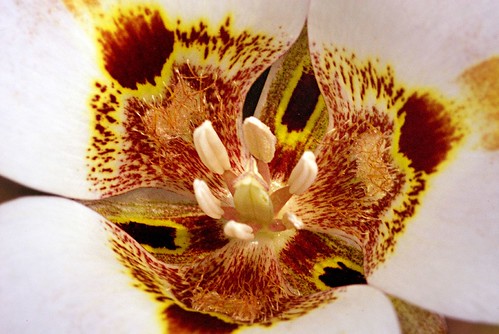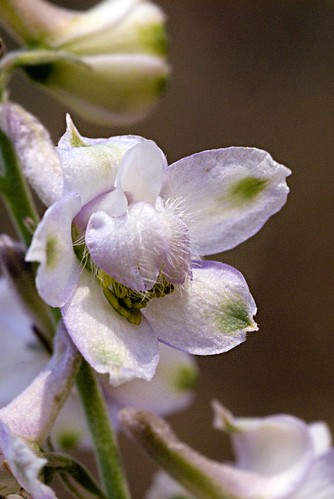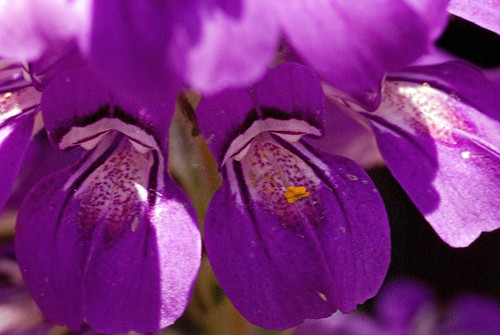Wild flowers—like the Calochortus above, also sometimes called a Mariposa Lily—grow along Hite’s Cove Trail above the South Fork of the Merced River off Route 140 and the Merced Canyon. Mid-April through mid-May is the best time for a visit.
The trail is about one foot wide, and winds high above a precipitous drop to the river. The path is dotted with poison oak as well as wild flowers.
On my recent trip, there was a high wind and I was with Julian, my eight-year-old who was tired from hiking Yosemite but still constantly in motion. In other words, this was no time for serenely setting up a tripod on a gentle, level field of flowers.
Some kinds of photography, mostly indoors in a studio, can be effectively and rigidly controlled. My kind of photography cannot, which is part of what I like about it.
My theory about the kind of photography I do is that it is like a knight’s quest: I start out with a vague purpose (or excuse) and take the adventures that are given to me. Once the adventures starts, I must make the best of things with the wits, resources, and equipment I have with me.
Traditional macro photography with a tripod and long exposures was out because of the terrain (and to make sure that Julian didn’t fall off the cliff or start rolling in poison oak while waiting for me). While using the wind to create a blurring motion effect like I did in this photo might have been a possibilty, nothing I saw seemed to lend itself to the idea. So I turned to technology.
The ISO of a camera determines the sensitivity of the sensor to light. The higher the ISO, the more you can take photos with a shutter speed fast enough to stop motion while keeping high depth-of-field. Setting a higher ISO is the digitial equivalent to choosing a film with a higher film speed (ASA). The downside of a faster film would have been more (and larger) grain; the comparable downside to a higher digital ISO is more noise.
My Nikon D200 has a default ISO of 100, which is what I use most of the time. In the photos I took in Merced Canyon, I boosted the ISO by an order of magnitude to between 1,000 and 1,600. I also turned on a setting called High ISO NR. This is supposed to use the camera’s processing power to reduce the noise from using a high ISO.
Based on these photos, I’d say it works pretty well. Raise high the ISO, digital photographic craftspeople, when the situation calls for it!
Photoshop also provides filters to reduce (and add) noise, but from what I see these don’t work as well as using the in-camera processing at the time you take the photo.
Just remember to reset the ISO sensitivity and High ISO NR when you don’t need them any more.
Here’s a photo of what is likely a larkspur from the Hite’s Cove Trail:
View this photograph larger.
This is a detail of a Chinese House, Collinsia heterophylla:
View this photograph larger.


